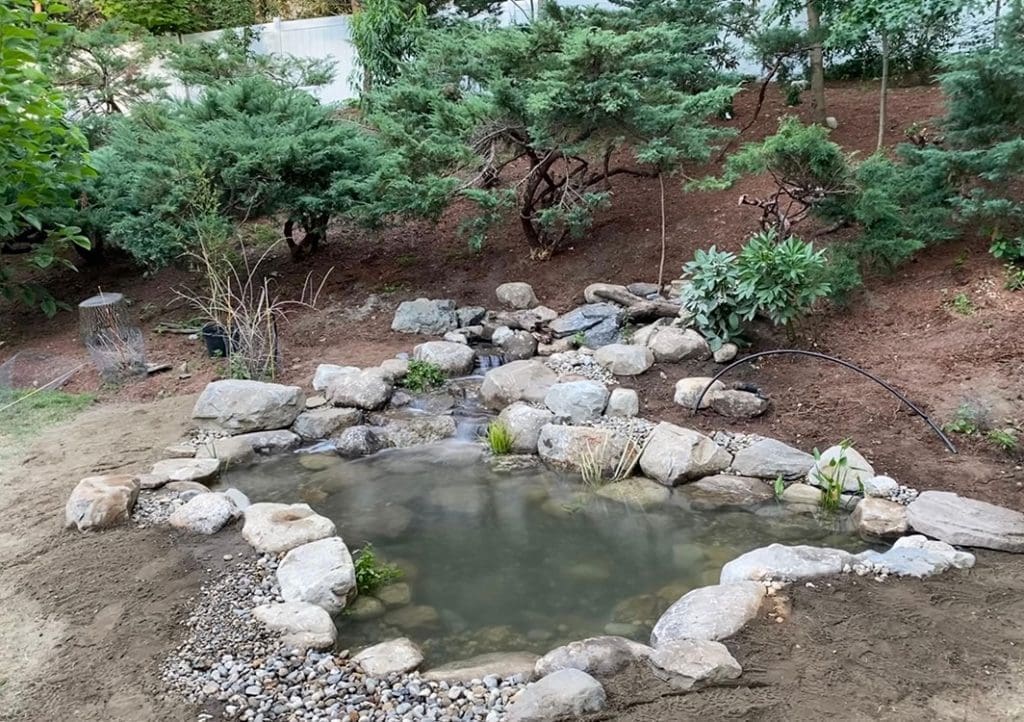Creating a pond is a beautiful way to enhance the aesthetic appeal of your outdoor space, support local wildlife, and even provide a tranquil spot for relaxation and reflection. When it comes to designing your pond, one critical decision stands out: determining the optimal depth. For many enthusiasts and professionals alike, a depth of 2 feet has emerged as a preferred standard. This choice is not arbitrary; it’s grounded in both scientific reasoning and practical considerations.
The Science Behind the Depth
The rationale for opting for a 2-foot depth in pond construction is multifaceted, with a significant emphasis on the scientific aspect. One of the primary concerns in pond design, especially in regions that experience cold winters, is ensuring the survival of aquatic life through freezing temperatures. A pond that measures 2 feet deep offers a sanctuary for fish during the winter months. At this depth, the surface of the pond may freeze over, but only to a thickness of several inches, leaving ample room below for water to remain in a liquid state. This phenomenon is crucial for the survival of fish; as the surface freezes, it actually insulates the water below, maintaining it at a relatively stable temperature that allows fish to enter a state of hibernation at the pond’s bottom. Here, in the warmer water beneath the ice, they can survive the winter unscathed.
This depth is particularly effective in preventing the entire body of water from freezing solid, a risk that increases with shallower designs. Contrary to what one might assume, deeper ponds do not necessarily lead to thicker ice formation on the surface. Instead, the depth helps maintain a buffer zone of water that stays above the freezing point, offering a safe haven for aquatic life.
Navigating Local Regulations
Beyond the scientific benefits, there are practical regulatory considerations that influence the decision to keep ponds at a depth of 2 feet. In many municipalities, a pond deeper than this threshold may no longer be classified simply as an ornamental feature. The concern from a regulatory perspective is that deeper bodies of water could be used for swimming or other recreational purposes, which introduces a range of safety and legal implications. Consequently, ponds exceeding this depth might require the homeowner to obtain specific permits, and in some cases, install safety features such as fencing to prevent accidental drowning.
This regulation is a pivotal factor for many pond owners who wish to avoid the bureaucratic hurdles and additional expenses associated with compliance. By maintaining a depth of 2 feet, your pond remains within the scope of an ornamental feature, simplifying its construction and upkeep while still providing the benefits of aesthetic appeal and wildlife support.
A Balance of Benefits
Opting for a 2-foot deep pond strikes a balance between creating a safe, sustainable habitat for fish and other aquatic creatures, and navigating the practical realities of local regulations and maintenance efforts. This depth ensures that your pond can thrive as an ecosystem throughout the year, especially in colder climates, without necessitating the additional complexities that come with deeper water features.
Moreover, by adhering to this depth, you can enjoy the beauty and tranquility of a pond without the need for extensive permits or safety modifications. It’s a choice that respects both the natural needs of the pond’s inhabitants and the regulatory landscape, ensuring that your outdoor feature adds value and charm to your space for years to come.
While the design of a pond involves various considerations, the choice of a 2-foot depth emerges as a wise compromise, grounded in scientific reasoning and practicality. Whether you’re an experienced pond keeper or a novice looking to add a water feature to your space, understanding the benefits of this specific depth can help you create a pond that is both beautiful and sustainable, enriching your outdoor living space and providing a haven for local wildlife.




